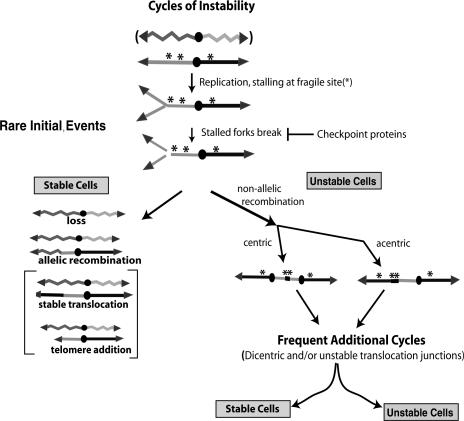Figure 7.
Cycles of chromosome instability arising from fragile sites. Two chromosome homologs are shown as a jagged line and a straight line. The DNA replication and instability of only one homolog is shown. Instability begins when DNA replication stalls at the fragile sites (*) and break unless suppressed by checkpoint proteins. Broken chromosomes generate either stable or unstable cells. Stable cells form when the broken chromosome is either lost, undergoes allelic recombination with a homolog, or undergoes nonallelic recombination to form a stable translocation, or when telomere sequences are added. Unstable cells are formed if the broken chromosome undergoes nonallelic recombination joining two fragile sites. Recombination generates either an acentric (not shown), a monocentric, or a dicentric chromosome. The dicentric chromosome may be unstable because it undergoes breakage-fusion-bridge cycle events (BFB) or because of its translocation junction (**). See text for discussion.

